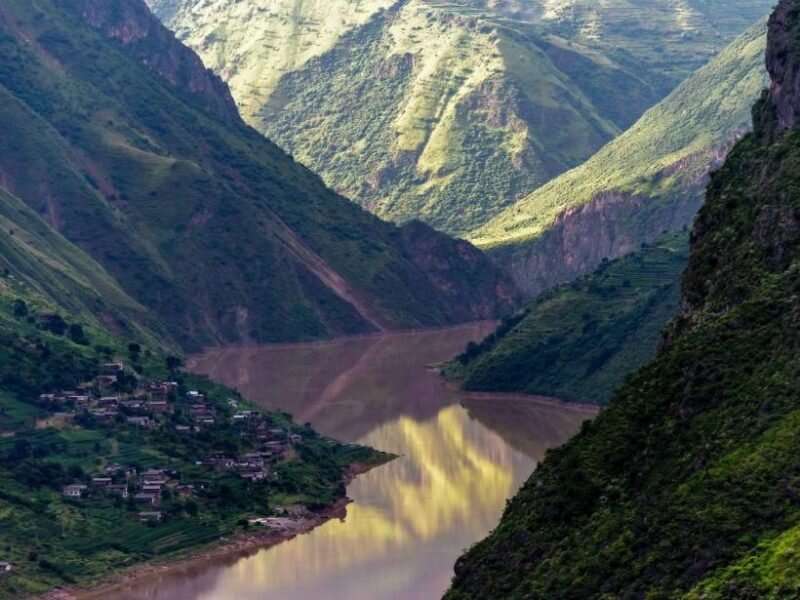Researchers home in on the age of the Yangtze River

A new study examining sediments from the Yangtze River sheds new light on the formation of one of the world's great waterways.
The new research finds that certain upstream middle Miocene sands are lacking in lower Yangtze deposits. Analyses of this pattern show that the formation of the longest river in Asia may date to somewhere between 10 million and 3 million years ago. This compares to some previous theories that held that the Yangtze might be as old as 40 million years or as young as 1 million years.
"Reorganization of the major rivers in the southeastern part of the Himalayan-Tibetan Plateau is linked to the landscape and environmental changes in Southeast Asia," said Yuntao Tian, a professor in the School of Earth Sciences and Engineering at Sun Yat-sen University in Guangzhou, China. Tian is one of the coauthors of the new study in Geophysical Research Letters.
The Yangtze, like many major rivers in Asia, originates in the Himalayan-Tibetan Plateau. Part of the argument about its age focuses around when the upper reaches of the river broke through the Sichuan Basin around the Three Gorges area, where it still flows today, and flowed eastward rather than southward.
Tian and his coauthors sought to settle the dispute by identifying the earliest layers of material from the plateau in gravels of the lower Yangtze.
To do this, they dated feldspar and muscovite in sands around Nanjing, China. They found no material characteristic of the upper Yangtze during the early to middle Miocene. This indicated that the upper reaches of the river were not flowing to what is now the lower Yangtze. Instead, Tian said, the river likely formed between the late Miocene and the following Pliocene epoch—sometime between 10 million and 3 million years ago.
"The Nanjing gravels are super important for understanding the Yangtze River," said Darryl Granger, a geology professor at Purdue University who was involved in peer review of the new study.
"It's very provocative," Granger said about the new study. "It's very important data to get out there and a good argument to have."
Granger said the new study doesn't completely settle the argument about the river's age, however. Today a lot of sediment from the eastern margin of the Tibetan Plateau washes down to the lower Yangtze because of the fast pace of erosion in the southeastern part of the Tibetan Plateau. The assumption in this paper, Granger said, is that erosion was also taking place at this scale in the late Miocene. It's possible, however, that the mountains weren't eroding as much during that period, which would account for the lack of younger feldspar or muscovite found in the lower Yangtze deposits. The new paper is "not a slam dunk against the Nanjing gravels being Yangtze," Granger said.
Tian said evidence shows that the southeastern part of the Himalayan-Tibetan Plateau where the upper Yangtze originates has experienced several phases of erosion during the Cenozoic that started 66 million years ago, went through the Miocene, and continue today.
Although the study itself doesn't examine the uplift of the Himalayas, the implications may also add fuel to the debate about the age of the mountains, which many researchers place somewhere between the Oligocene, which started about 33.9 million years ago, and the Pliocene, which ended about 2.58 million years ago.
More information: Xilin Sun et al. No Yangtze River Prior to the Late Miocene: Evidence From Detrital Muscovite and K‐Feldspar 40 Ar/ 39 Ar Geochronology, Geophysical Research Letters (2021). DOI: 10.1029/2020GL089903
Journal information: Geophysical Research Letters
Provided by American Geophysical Union
This story is republished courtesy of Eos, hosted by the American Geophysical Union. Read the original story here.





















